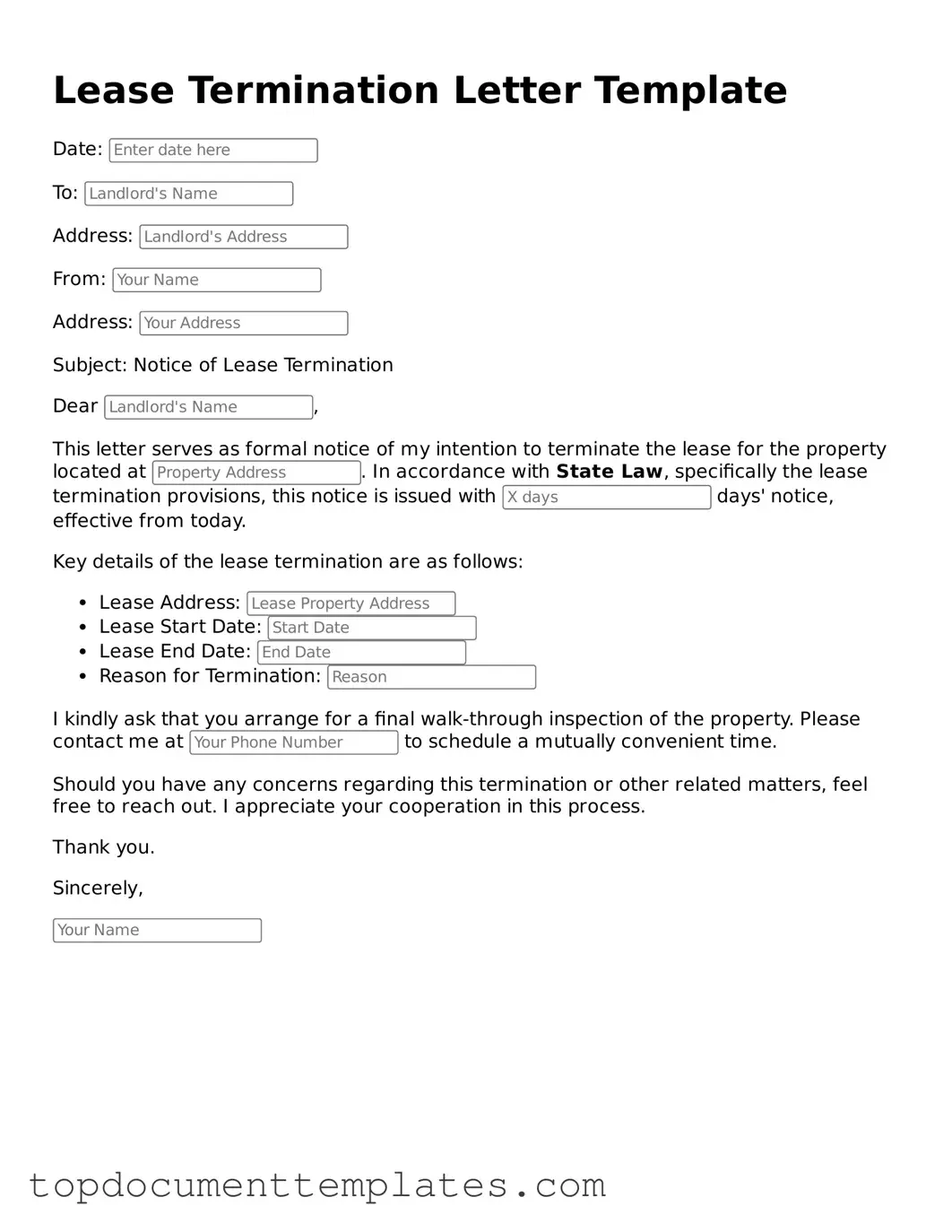When navigating the complexities of rental agreements, a Lease Termination Letter serves as a crucial tool for both landlords and tenants. This document formalizes the intent to end a lease, providing a clear and concise notice that outlines essential details such as the parties involved, the property address, and the effective date of termination. It typically includes information regarding the reasons for termination, whether it be due to the expiration of the lease term or other circumstances. Additionally, the letter may address any obligations related to the return of security deposits and the condition of the property upon vacating. Understanding the importance of this letter can help prevent misunderstandings and legal disputes, making it an essential component of the rental process. Timeliness in delivering this notice is critical; failing to adhere to the required notice period can result in complications for both parties. Therefore, crafting a well-structured Lease Termination Letter is not just a formality, but a necessary step in ensuring a smooth transition out of a rental agreement.
